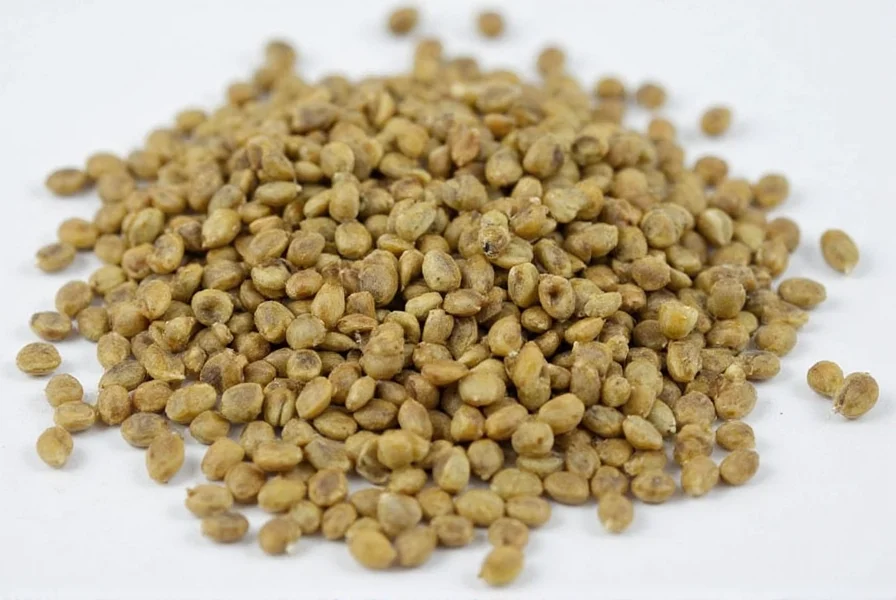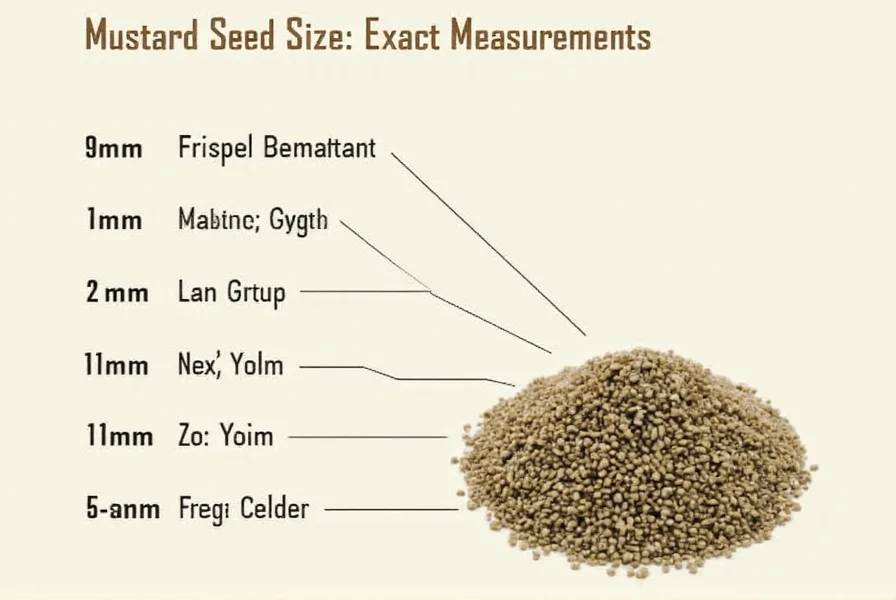A typical mustard seed measures between 1 and 2 millimeters in diameter, with black mustard seeds averaging 1-1.5 mm and yellow/white varieties ranging from 1.5-2 mm. To visualize, most mustard seeds are approximately the size of a grain of sand or the tip of a sharpened pencil.
When you hold a mustard seed between your fingers, you're handling one of nature's smallest yet most potent botanical specimens. These tiny powerhouses contain all the genetic information needed to grow a plant that can reach heights of 6-10 feet under optimal conditions. Understanding the precise dimensions of mustard seeds matters significantly for gardeners, chefs, and anyone working with these versatile seeds.
Measuring Mustard Seeds: Precise Dimensions
Mustard seeds come in three primary varieties, each with slightly different size characteristics:
| Variety | Average Diameter | Visual Comparison |
|---|---|---|
| Black Mustard (Brassica nigra) | 1.0-1.5 mm | Grain of fine sand |
| Yellow/White Mustard (Sinapis alba) | 1.5-2.0 mm | Pinhead or pencil tip |
| Brown Mustard (Brassica juncea) | 1.2-1.8 mm | Coarse salt grain |
Using precision calipers, agricultural researchers have determined that the average mustard seed weighs approximately 0.002 grams. This minuscule size explains why mustard seeds pour so freely and why they're challenging to handle individually. When measuring mustard seeds for planting, gardeners typically work with quantities rather than individual seeds—roughly 250-300 seeds per gram depending on the variety.
Why Mustard Seed Size Matters in Practical Applications
The small dimensions of mustard seeds directly impact how we interact with them across various contexts. For gardeners, the tiny size dictates proper planting depth—mustard seeds should be sown no deeper than 1/4 inch (6 mm), as their limited energy reserves can't support sprouts emerging from greater depths. Planting too deep remains one of the most common reasons for failed germination.
Chefs and food manufacturers face different challenges with mustard seed dimensions. The small size allows these seeds to distribute evenly in spice blends but also makes them difficult to separate from other similarly sized ingredients. In commercial processing, specialized sieves with 1.5 mm mesh openings effectively sort mustard seeds from contaminants while retaining the valuable crop.

Historical Context of Mustard Seed Size References
The famously small size of mustard seeds has made them a metaphor across cultures for centuries. The biblical parable describing the mustard seed as 'the smallest of all seeds' that grows into a large plant reflects ancient agricultural knowledge. While modern botany shows several seeds are actually smaller (like orchid seeds), mustard seeds were among the smallest commonly encountered by people in biblical times.
This historical reference continues to resonate because the dramatic contrast between the seed's minuscule size and the plant's substantial growth remains visually striking. A single mustard plant can produce thousands of these tiny seeds, each capable of generating a new plant that reaches several feet in height—a testament to nature's efficient design.
Measuring Mustard Seeds at Home
You don't need specialized equipment to estimate mustard seed dimensions. Try these simple methods:
- Ruler comparison: Place 10 seeds end-to-end on a metric ruler to calculate average length
- Water displacement: Measure how much water 100 seeds displace in a graduated cylinder
- Photographic scaling: Take a macro photo with a coin for scale, then measure using image software
For precise agricultural or culinary applications, however, professional seed testing laboratories use digital imaging systems that measure thousands of seeds per minute with micron-level accuracy. This precision matters when determining seed viability, calculating planting rates, or ensuring consistent product quality in food manufacturing.

Practical Implications of Mustard Seed Dimensions
Understanding the exact size of mustard seeds proves valuable across multiple disciplines. In agriculture, seed size correlates with germination rates and seedling vigor—larger seeds within the mustard family often produce stronger initial growth. Food scientists consider seed dimensions when developing grinding equipment, as the 1-2 mm size requires specific mill configurations to achieve consistent powder texture without overheating.
For home gardeners, recognizing the small size helps prevent common mistakes like over-seeding or planting too deeply. When sowing mustard seeds, remember that their tiny dimensions mean they need only a light covering of soil—about twice their diameter—to germinate successfully. This knowledge transforms what might seem like insignificant specks into powerful tools for growing vibrant plants or creating flavorful culinary creations.
How many mustard seeds equal one teaspoon?
Approximately 150-200 mustard seeds fill one standard teaspoon, depending on the variety. Black mustard seeds, being slightly smaller, number closer to 200 per teaspoon, while yellow mustard seeds average around 150 per teaspoon due to their larger size.
Can you see the individual features of a mustard seed without magnification?
Yes, with good eyesight you can discern basic features of a mustard seed without magnification. The round to slightly oval shape, smooth surface, and color variations (black, brown, or yellow) are visible to the naked eye. However, examining the seed coat texture or embryo details requires at least 10x magnification.
How does mustard seed size compare to other common seeds?
Mustard seeds rank among the smaller commonly used seeds. They're significantly smaller than sunflower seeds (5-8 mm) or pumpkin seeds (8-12 mm), slightly smaller than sesame seeds (2-3 mm), and comparable to poppy seeds (0.5-1 mm). Only certain herb seeds like thyme and some flower seeds are smaller than mustard varieties.
Does the size of a mustard seed affect its heat level?
No, the size of a mustard seed doesn't correlate with its pungency. Heat level depends on the specific variety and growing conditions rather than physical dimensions. Black mustard seeds, though slightly smaller, generally produce more pungent mustard than the larger yellow varieties due to different chemical compositions, not size differences.
How deep should you plant mustard seeds considering their small size?
Mustard seeds should be planted at a depth of 1/8 to 1/4 inch (3-6 mm), which is approximately 2-4 times their diameter. Planting deeper than 1/4 inch often prevents successful germination because the small seed doesn't contain enough energy reserves to push the sprout through more soil.











 浙公网安备
33010002000092号
浙公网安备
33010002000092号 浙B2-20120091-4
浙B2-20120091-4